When it comes to your aircraft brake system, it’s important to know how it works so you can identify potential maintenance problems and fix them quickly. In this blog post, we are going to talk about how aircraft brake systems work, as well as common problems with brakes.
How Do Aircraft Brake Systems Work?
Before we can understand how modern brake systems work, it’s important to dive into early aircraft systems. Early brakes for aircraft usually consisted of a single lever that mechanically transmitted the brake control input through cables to drum brakes located on the main wheels and sometimes on the nose wheel. Fast forward to the 1930s and 1950s and a brake system called “expander tube brakes,” was used. According to Aero Toolbox, expander tube brakes “are a low-pressure braking system that has now largely been replaced by disc brakes the basic design consists of a lightweight frame attached to the outer section of a rubber tube.”
These braking systems worked well for the time, but as technology advances, more modernized systems are required to keep up with the capabilities of aircraft today.
Aircraft braking systems today are primarily hydraulically transmitted with hydraulic pumps providing the necessary fluid pressure to support the expansive systems of brakes on large aircraft.
Here’s an image demonstrating how modern brake systems work:

Types of Aircraft Brakes
Single Disc
Consists of a rotor or fixed disc that makes up part of the wheel, a caliper that is usually activated hydraulically with brake fluid, and a pad that pushes against the rotos. When the brake is stepped on, the caliper pushes out pistons that press the pad tight to the rotor.
Here’s a video with more information about disc brakes:
Dual Disc
A dual disc configuration is used if the friction generated by a single disc brake isn’t enough to stop an aircraft.
Multiple Disc
Larger, heavier aircraft need a multiple disc brake system that is built on an extended bearing carrier. The carrier holds a series of alternating steel stators and copper or bronze-plated discs. The stators, according to Pilot Mall, are a type of flat plate covered in wearable brake lining material which is designed to press against the rotors. Hydraulic pressure on the piston compresses the entire stack, generating high levels of friction and heat to slow the wheel rotation. This system is paired with power boost master cylinders or power brake control valves.
Here is an image demonstrating how multiple disc systems work:

Segmented Rotor
The brake rotors in a segmented rotor-disc brake system have a fixed high-friction brake linings contact rotors to slow the wheel. Rather than being a solid, flat disc, the rotors of a segmented system have slots or segmented spaces cut into them to allow the heat to be an avenue of escape. The cutouts also help to prevent or reduce the potential for warping under high heat conditions.
Common Problems Found with Aircraft Brakes
Aircraft brakes can experience a lot of different maintenance problems, so it is important to know what to look for.
Here are some common problems:
- Overheating
Overheating is a result of friction from the aircraft slowing down.
- Air in the brake lines
Air in the brake lines can make brake fluid less effective.
- Dragging
If there is a dragging sensation when the brake pedal is released, it could be due to a malfunctioning return mechanism, weak return spring, warped disc, or air in the brake fluid line.
- Brake shoe wear
This is a normal maintenance problem, but if you don’t pay attention to it and get it fixed quickly, it can speed up the process.
- Brake fluid leaks
Brake fluid leaks can be caused by damaged or worn brake lines and hoses, loose or damaged hose systems junctions, and more.
- Chattering
Chattering can be a result of a warped disc or misalignment.
At the end of the day, it is crucial to pay attention to the maintenance your aircraft requires to stay in the air. When you keep your brake systems maintained, you can count on safer landings and peace of mind.
AAI’s Brake System Repair and Overhaul Process
AAI offers brake system repairs and overhauls, as well as overhauls exchange on many popular models.
Here are the steps involved in our brake overhaul process:
- Disassemble
- Clean and remove paint
- Perform visual and non-destructive inspections
- Replace with new seals and wear items
- Reassemble
- Functional test
- Issue 8130-3 return to service certificate
AAI Can Help You with Your Aircraft Brake System Needs
When you can’t find the parts you need, the problems multiply. You send in your plane for routine maintenance and expect to have it back in a week. But inspections turn up several parts that need to be replaced, which could take weeks or even months. What now?
The entire process of locating, ordering, and receiving certified aircraft accessories is a huge headache.
Uncertified, untested parts are all over the internet, but do you really want to risk your safety for convenience? Certified replacement parts can take a ridiculously long time to ship – sometimes months – and the cost can be absurdly high.
Unless you shop with AAI.
We’ll help you avoid the delays and headaches, and instead get certified, safe, and tested aircraft accessories so that you can fix your aircraft and get back to flying.
1. Call AAI
2. Get a quote
3. Fix your plane and fly
